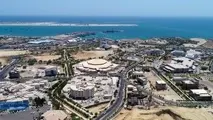Baby born in Tehran Metro
A man was accompanying his pregnant wife using the metro. The wife needed emergency service all of a sudden, they had to leave the train and the clerks at subway rushed to help her calling for midwifery doctor to be sent by ambulance. The baby was born at one of the rooms of Metro station and before being transferred to the hospital.

A man was accompanying his pregnant wife using the metro. The wife needed emergency service all of a sudden, they had to leave the train and the clerks at subway rushed to help her calling for midwifery doctor to be sent by ambulance. The baby was born at one of the rooms of Metro station and before being transferred to the hospital.
Public relations chief of Tehran Metro Company Mohsen Mohammadian explained that at 8:15 this morning, a woman and her husband from Imam Khomeini metro station were heading to Tajrish station.
Mohsen Mohammadian added: "In the middle of the route, the woman who was in urgent need of medical treatment, she was driven out by the metro station agents, and eventually she was born in the presence of the emergency staff of the baby at the metro station.
According to him, the baby was born in Tehran metro, the mother and baby who are in good health condition, were taken to the hospital by emergency ambulance.
The Tehran Metro is a rapid transit system serving Tehran, Tehran’s is one of the busiest metros in the Middle East and the cleanest in the world, The system is owned and operated by Tehran Urban and Suburban Railway.
It consists of 6 operational metro lines (and an additional commuter rail line), with construction underway on three lines including the west extension of line 4, line 6 and north and east extension line 7.The Tehran Metro carries more than 3 million passengers a day.
In 2014, 815 million trips were made on Tehran Metro. As of 2019, the total system was 221 kilometers (137 mi) long, 177 kilometers (110 mi) of which is metro-grade rail.
It is planned to have a length of 430 kilometers (270 mi) with 9 lines once all construction is complete by 2025.



